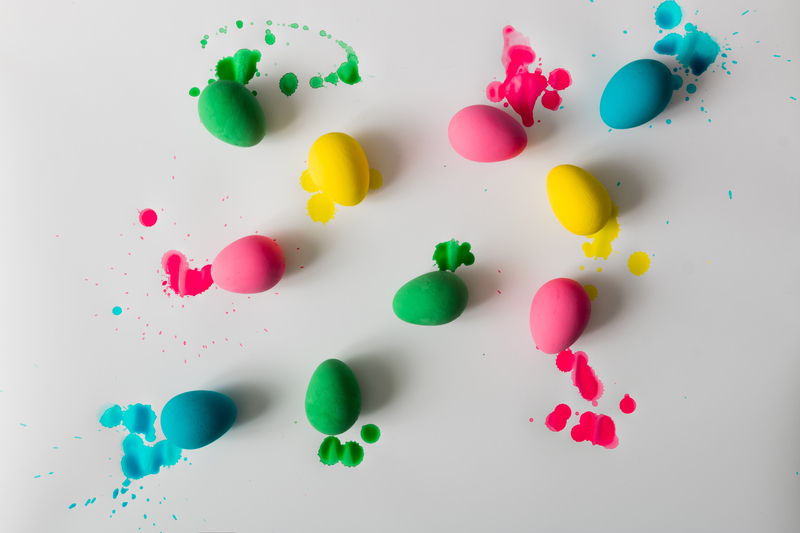Keep Mold at Bay: Top Tips for a Clean Bathroom
Posted on 14/08/2025
Keep Mold at Bay: Top Tips for a Clean Bathroom
Are you constantly battling mildew and grime in your bathroom? Bathrooms are humid and damp by nature, making them the perfect environment for mold growth. If left unchecked, mold not only ruins the appearance of your space but can also harm your health and damage your home. In this comprehensive guide, we reveal the best tried-and-tested strategies to prevent bathroom mold and ensure your sanctuary remains spotless and healthy.
Why Is Mold a Common Problem in Bathrooms?
The bathroom is a frequent hotspot for mold problems due to persistent moisture, poor ventilation, and organic materials that support fungal growth. Mold spores thrive on damp surfaces--especially on walls, ceilings, grout, and caulking--so taking action is essential to keep mold at bay.
- High humidity from showers and baths
- Poor air circulation
- Lack of immediate cleaning
- Standing water or leaks
- Organic matter like soap residue

The Dangers of Mold in Your Bathroom
Mold is more than just an eyesore. It can adversely affect your health, causing allergies, respiratory issues, skin irritation, and even long-term complications in some individuals. Mold, particularly black mold (Stachybotrys chartarum), releases spores that can exacerbate asthma and lead to other severe health concerns--especially in children, the elderly, and anyone with a weakened immune system.
The Most Common Types of Bathroom Mold
Mold in bathrooms comes in different forms. These are the most prevalent types you may encounter:
- Aspergillus: Found on damp walls and around windows; can cause respiratory problems.
- Cladosporium: Usually appears as black, green, or brown patches on grout and tiles.
- Stachybotrys: Also known as black mold, it often looks slimy and dark green or black.
Top Tips to Prevent Bathroom Mold
1. Improve Ventilation
Proper ventilation is crucial. Without it, humidity lingers in the air and on surfaces--providing prime conditions for mold. Here's how to boost airflow:
- Install or upgrade an exhaust fan: Use it during and after showers to remove moist air. Ideally, the fan should run for at least 20-30 minutes post-shower.
- Open windows and doors: Allow cross-ventilation whenever possible, especially after baths and showers.
- Remove items that block air circulation: Keep clutter to a minimum and avoid hanging towels over vents.
2. Wipe Down Surfaces After Use
Moisture control is non-negotiable if you want a mold-free bathroom. Dry all wet surfaces, including:
- Shower walls and doors
- Tiles and grout lines
- Bathtubs and sinks
- Mirrors and windows
Use a squeegee or a microfiber towel and make it a family habit--especially after everyone showers.
3. Seal Grout Lines and Cracks
Grout and caulking are prime habitats for mold.
- Inspect grout and caulk regularly for cracks, gaps, or wear.
- Routinely seal grout with a waterproof sealer--ideally every six months.
- Replace old or damaged caulking promptly to prevent water from seeping behind tiles.
4. Fix Leaks Immediately
Leaky fixtures are a leading cause of subtle and persistent moisture build-up. Check for drips and standing water around:
- Toilets and sinks
- Bathtubs and showers
- Pipe connections and under vanities
Address leaks as soon as possible--even a slow drip can fuel mold growth over time.
5. Use Mold-Resistant Products
Modern building materials are available with built-in properties to repel mold:
- Mold-resistant paint for walls and ceilings
- Mold-inhibiting shower curtains and liners
- Anti-microbial grout and caulk
Whenever you renovate or replace bathroom fixtures, opt for these specialty products--they provide added protection.
Daily and Weekly Bathroom Cleaning Routines
Daily Bathroom Mold Prevention
- Wipe down tiles, faucets, and counters after every use
- Use a squeegee to remove excess water from shower walls and glass
- Leave shower doors or curtains open to increase air flow
- Hang towels and bathmats to dry outside the bathroom if possible
Weekly Bathroom Deep Cleaning
- Scrub grout and tiles: Use a mildew-resistant bathroom cleaner, or a homemade solution of vinegar and water (1:1 ratio)
- Disinfect high-touch surfaces: Faucets, handles, light switches
- Wash shower curtains and bathmats: Check care labels and use the hottest setting allowable
- Clean out drains to prevent clogs and standing water
Natural Cleaning Remedies for Mold Control
Prefer eco-friendly solutions? Try these natural cleaners that are effective at banishing mold in the bathroom:
- White Vinegar: Kills up to 82% of mold species. Spray undiluted vinegar on affected surfaces, allow to sit for at least an hour, then scrub and rinse.
- Baking Soda: Acts as a gentle abrasive and deodorizer. Mix with water to form a paste, apply to moldy spots, scrub, and rinse.
- Hydrogen Peroxide (3% solution): Effective on most surfaces. Spray, let bubble for 10 minutes, then wipe clean.
- Tip: Avoid using bleach on porous surfaces, as it can make mildew issues worse by only treating the surface layer.
Smart Bathroom Design to Prevent Mold
If you're remodeling or planning a new bathroom, smart design choices can help keep mold at bay from the start:
- Use large tiles: Fewer grout lines mean fewer places for mold to settle.
- Choose wall-mounted vanities and toilets: This allows for easier cleaning underneath and improved airflow.
- Consider glass shower doors: Easier to clean than fabric curtains.
- Install shelves instead of cabinets: Reduces dark, enclosed spaces where moisture can persist.
- Opt for moisture-resistant flooring: Ceramic, porcelain, or natural stone are good options.
What to Do If You Find Mold in Your Bathroom
Don't panic if you spot mold early on. Most small, localized infestations can be managed with a thorough cleaning. Here's a step-by-step guide:
- Wear rubber gloves and a mask to avoid direct contact with spores.
- Ventilate the room by opening windows and doors.
- Apply a mold-fighting solution (store-bought or homemade) on all visible mold patches.
- Scrub with a brush, focusing on grout, caulking, and corners.
- Rinse surfaces thoroughly and dry every area completely.
For large infestations (bigger than 10 square feet), or if mold keeps returning, it's best to consult a professional.

Frequently Asked Questions About Bathroom Mold
Is bathroom mold dangerous?
Yes--especially for those with allergies, asthma, or weakened immune systems. Even mild exposure can cause symptoms, so prompt removal is essential.
How can I keep my bathroom dry?
Consistent ventilation, drying surfaces after use, and fixing leaks are the most effective ways to keep your bathroom dry and discourage mold.
How often should I clean my bathroom to prevent mold?
Daily moisture control (such as wiping down surfaces) and weekly deep cleaning are ideal routines for keeping mold at bay.
Final Thoughts: Keep Mold at Bay for a Healthier Bathroom
Keeping your bathroom clean and mold-free may seem daunting, but it's absolutely achievable with the right habits and precautions. By managing humidity, cleaning surfaces regularly, and staying alert for leaks, you'll drastically reduce the chances of stubborn mold taking root in your sanctuary.
Remember, the key to bathroom mold prevention is consistency, vigilance, and smart choices when cleaning and renovating. Follow these practices, and you'll enjoy a sparkling, safe, and healthy bathroom for years to come.
- Regularly ventilate and dry your bathroom
- Seal and repair all leaks and cracks quickly
- Choose mold-preventing materials
- Never leave wet towels or mats on the floor
- Clean and tidy up after every use
Ready to keep mold at bay? Start implementing these tips and make mold and mildew a thing of the past in your bathroom!




